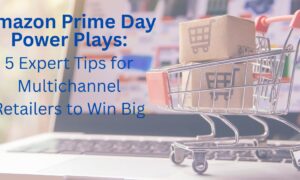It doesn’t matter if your website is well designed, your customer service is second to none, and your prices are competitive; if you don’t get the last-mile delivery process right, then customers will never come back for more.
Luckily with thorough planning and the right tools, you can achieve both efficiency and user satisfaction, making last-mile delivery cost-effective and capable of earning customer loyalty. Let’s discuss how this can be done.
Use modern routing software
The cornerstone of a great stripping strategy is cutting-edge last mile delivery routing software. If you don’t have this, you’ll have to put up with the problems that come with manually allocating delivery routes to drivers, and managing fleets that you cannot adequately track.
Routing software is able to identify the best way to orchestrate delivery drop-offs while avoiding disruption on the roads in real-time.
This means that each driver will be capable of encompassing more deliveries in a shift, and you’ll be saving on fuel at the same time as exceeding customer expectations as demand grows.
What is more, good route planning software for last-mile delivery will even be able to automatically update customers as to the progress of their order, alleviating the anxiety that often gets associated with waiting around for a package to arrive.
Don’t forget about vehicle maintenance
You can’t control congestion or the weather conditions, but you can take the reins when it comes to other potential causes for disruption to your delivery process; namely through adhering to a vehicle maintenance schedule that is pre-emptive rather than reactive.
A combination of daily checks carried out by drivers, in combination with regular servicing and replacement of worn parts as needed, will dramatically reduce the chances of a breakdown leaving customers disappointed.
Outsource what you can’t manage in-house
For lots of eCommerce operators, it’s impossible to encompass every aspect of the last-mile delivery process with the resources you have available internally. That’s where outsourcing of fulfillment can have a transformative impact on your operations.
Whether you simply work with a third-party carrier to collect and deliver packages from your warehouse, or you go the whole hog with an entirely outsourced fulfillment setup, outsourcing gives you ultimate flexibility, and can save costs while overcoming limitations.
Track performance and make changes
Being on the ball when it comes to analyzing your last-mile delivery processes, looking into performance metrics, and pinpointing weaknesses will let you implement improvements sooner rather than later.
You should be able to see if deliveries are being missed and extrapolate from the data why hold-ups are occurring, or why wastage is accumulating through the damage done to the package, amongst other things.
With this hard evidence to hand, your decision-making for ameliorating sub-processes does not need to be based on guesswork.
Listen to customers
As mentioned, it pays to keep customers in the loop when their orders are out for delivery, but in addition to tracking performance from raw data, you can also tell how well you are doing by simply asking customers what they think of the quality of the service itself.
Whether you do this with a follow-up survey, or with a feedback tool that is integrated alongside the order tracker, the benefits should be clear. And when complaints are made unprompted, you must not dismiss them as a one-off.
The last word on last-mile delivery
Don’t expect your delivery processes to be perfect straight away, or stress if the changes you make don’t result in overnight improvements.
Plan carefully, and test thoroughly, to be sure that you are doing all you can to get goods to customers quickly and efficiently.


































